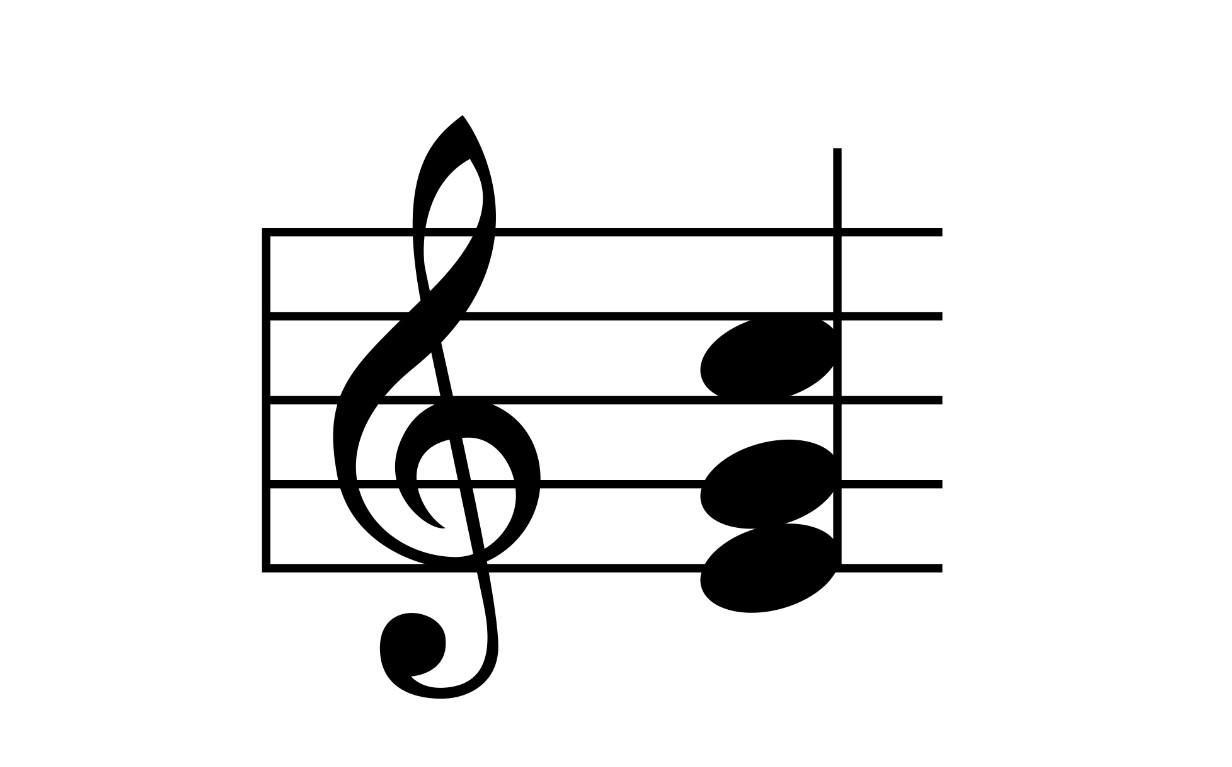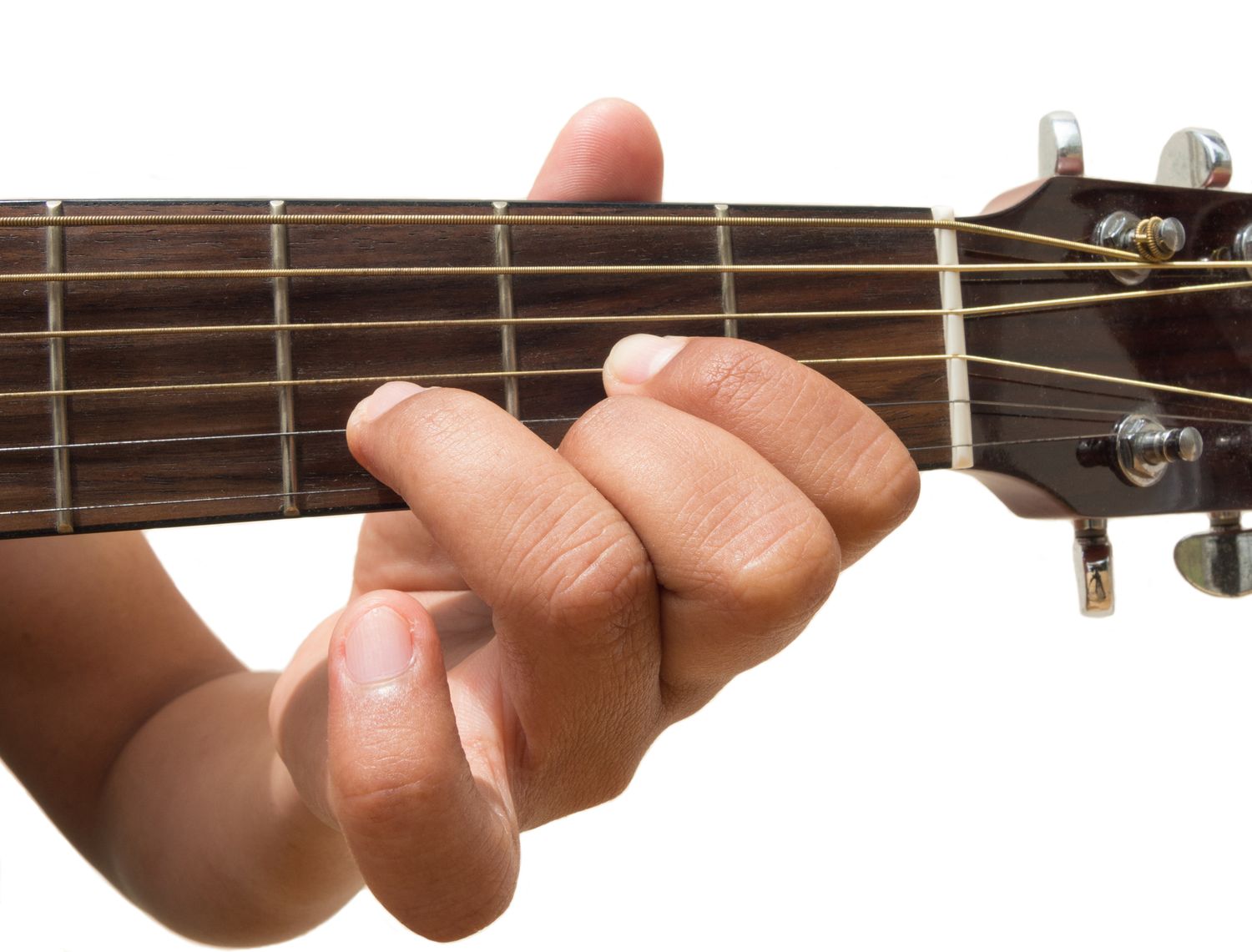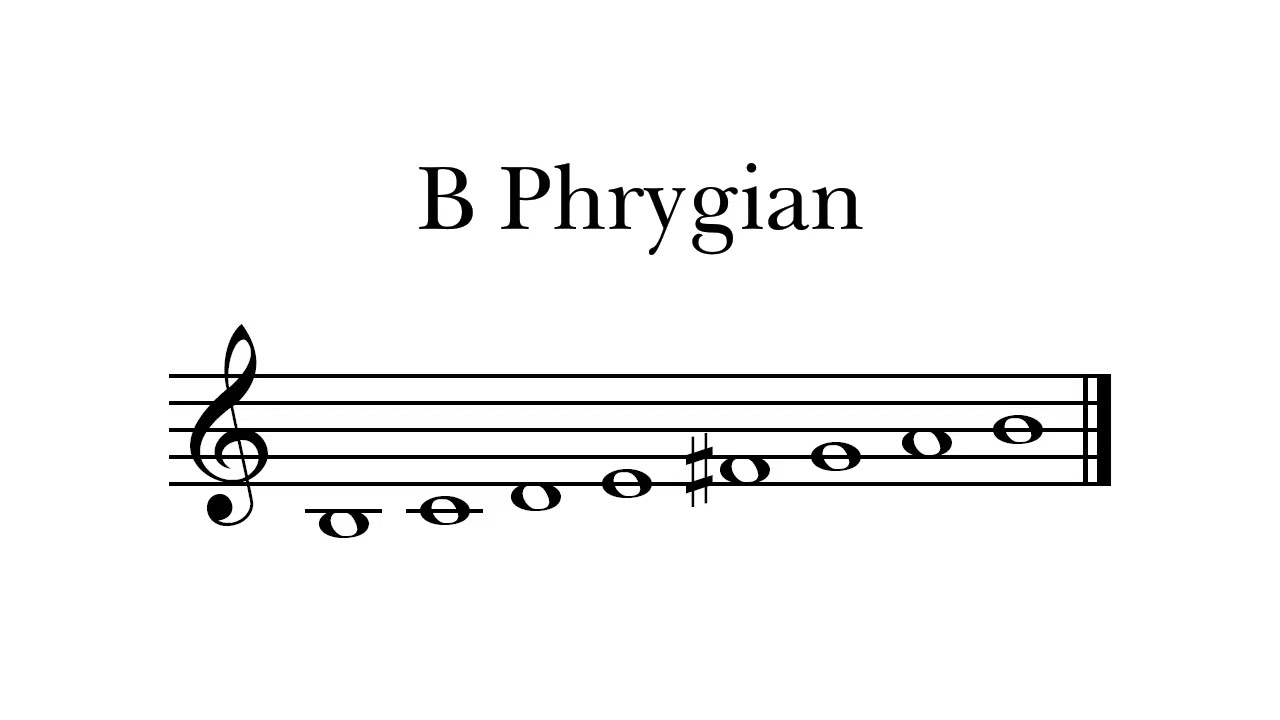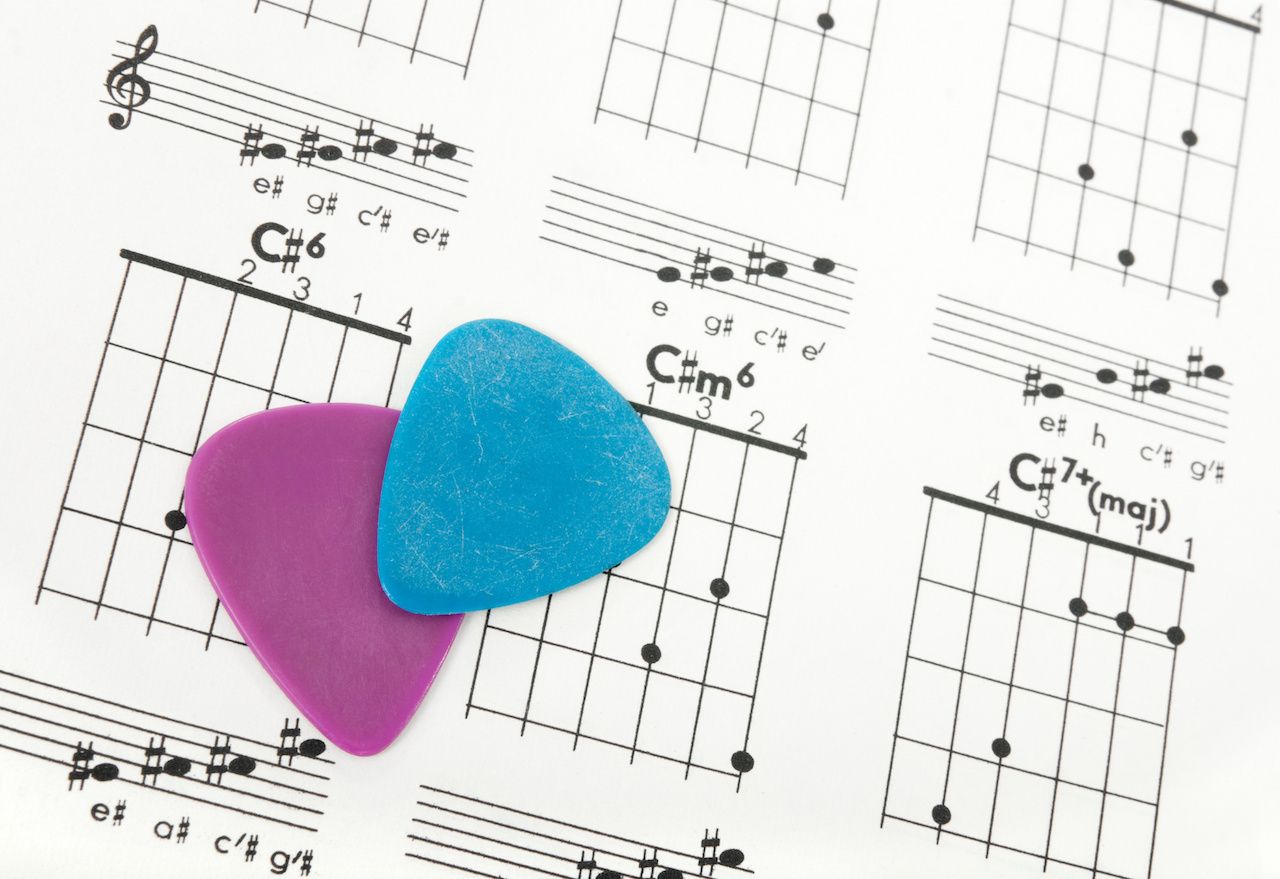Home>Production & Technology>Music Theory>How To Play Chords Music Theory


Music Theory
How To Play Chords Music Theory
Published: January 30, 2024
Learn music theory and discover how to play chords. Master the fundamentals of music theory and unlock your potential as a musician.
(Many of the links in this article redirect to a specific reviewed product. Your purchase of these products through affiliate links helps to generate commission for AudioLover.com, at no extra cost. Learn more)
Table of Contents
Introduction
Welcome to the world of music theory! Understanding how chords work is fundamental to becoming a skilled musician. Chords are the building blocks of music, providing harmony and adding depth to melodies. Whether you’re a beginner learning to play an instrument or an experienced musician looking to expand your knowledge, this article will guide you through the basics of chords in music theory.
Chords can be described as a group of three or more notes played simultaneously. They create harmonies by combining different intervals and tones. Understanding how chords are constructed and how they function within a musical piece will allow you to play and create your own compositions with confidence.
Throughout this article, we will cover major chords, minor chords, augmented and diminished chords, seventh chords, inversions and voicings, chord progressions, and common chord symbols. By the end, you will have a solid understanding of the different types of chords and how to incorporate them into your playing.
If you’re new to music theory, don’t worry! We’ll start with the basics and gradually progress to more advanced topics. By the time you finish reading this article, you’ll be equipped with the knowledge to play a variety of chords and understand their role in music.
So, grab your instrument of choice, and let’s dive into the fascinating world of chords in music theory!
Basics of Chords
Before we delve into the different types of chords, let’s explore the basic components that make up a chord. A chord consists of three or more notes played together. These notes are derived from the major scale, which is the foundation of Western music theory.
The major scale consists of seven unique pitches, named after the first seven letters of the alphabet (A, B, C, D, E, F, G). Each note in the scale is assigned a degree, denoted by Roman numerals. For example, the first note of the scale is known as the tonic or the root note, and it’s designated as I. The second note is called the supertonic (II), the third note is the mediant (III), and so on.
To construct a basic major chord, we start with the root note and add two more notes above it, creating a stack of thirds. These two additional notes are found by skipping one note in the scale and taking the next two. For instance, to build a C major chord, we start with the root note C, skip D, and take E and G. These three notes – C, E, and G – played together form a C major chord.
An important element of chords is the concept of intervals. An interval is the distance between two notes in terms of pitch. In the major chord example mentioned above, the interval between the root note C and the second note E is called a major third. The interval between the second note E and the third note G is called a minor third.
Understanding intervals is crucial because they determine the quality of a chord. The combination of major and minor thirds determines whether a chord is major, minor, augmented, or diminished.
Now that we’ve explored the basics of chords, let’s dive deeper into the different types of chords and their unique characteristics.
Major Chords
Major chords are the most common and widely used chords in music. They have a bright and happy sound and are often associated with a sense of resolution and stability. Major chords are built using a specific formula: the root note, a major third, and a perfect fifth.
Let’s take the C major chord as an example. The C major chord consists of the root note C, the major third E, and the perfect fifth G. When these three notes are played together, they create a harmonious and pleasing sound.
One way to visualize the construction of major chords is through their chord formula. The formula for major chords is 1-3-5. This means that you take the root note of the chord, skip the second note in the scale, and add the next note, and then skip the fourth note and add the fifth note. Applying this formula to different root notes will yield major chords in different keys.
Major chords are often used as the foundation for many popular songs and are found in various genres of music. They provide a strong and stable sound and are frequently used to convey happiness, confidence, and major tonality. Understanding major chords and their relationship to other chords is essential in improvisation, songwriting, and playing in a band.
Now that you have a solid understanding of major chords, let’s move on to the next section: minor chords.
Minor Chords
While major chords have a bright and happy sound, minor chords evoke a sense of melancholy and introspection. They are often associated with more somber or emotional moods in music. To build a minor chord, we use the root note, a minor third, and a perfect fifth.
Let’s explore the construction of a C minor chord. The C minor chord consists of the root note C, the minor third Eb, and the perfect fifth G. When these three notes are played together, they create a darker and more introspective sound compared to the C major chord.
Similar to major chords, minor chords also have a chord formula. The formula for minor chords is 1-b3-5. The “b3” indicates that we lower the third note of the major scale by a half step to create the minor third interval.
Minor chords are commonly used in many genres of music, including blues, jazz, and rock. They add depth and complexity to musical compositions and can convey a range of emotions such as sadness, longing, and introspection.
Understanding the relationship between major and minor chords is crucial in music theory. In many cases, songs and compositions will use a combination of major and minor chords to create contrast and tension. Exploring different chord progressions can help you create captivating melodies and evoke specific emotions in your music.
Now that you have learned about major and minor chords, let’s move on to the next section: augmented and diminished chords.
Augmented and Diminished Chords
In addition to major and minor chords, there are also augmented and diminished chords. These chords add a unique flavor and tension to musical compositions.
An augmented chord is created by taking a major chord and raising the fifth note by a half step. This creates a more dissonant and tense sound compared to a major chord. For example, an augmented C chord consists of the root note C, the major third E, and the augmented fifth G#. The augmented fifth creates the distinctive sound of the chord.
On the other hand, a diminished chord is formed by taking a minor chord and lowering the fifth note by a half step. This creates a dark and unresolved sound. For example, a diminished C chord consists of the root note C, the minor third Eb, and the diminished fifth Gb.
Augmented and diminished chords can be used to add tension and create interesting harmonic progressions in music. They are often used in jazz and contemporary music to create complex and unexpected chord changes.
Understanding augmented and diminished chords allows you to explore a wider range of musical possibilities and experiment with different harmonies and tonalities. They can add depth and complexity to your compositions and improvisations, enabling you to create unique and captivating musical experiences.
Now that we’ve covered augmented and diminished chords, let’s move on to the next section: seventh chords.
Seventh Chords
Seventh chords are a type of chord that adds an additional note to the basic triad (consisting of the root, third, and fifth notes). This added note is known as the seventh, and it introduces a new level of complexity and richness to the chord.
There are different types of seventh chords, including major seventh chords, minor seventh chords, dominant seventh chords, and diminished seventh chords. Each type has its own unique character and sound.
A major seventh chord is formed by adding the major seventh interval above the root note. For example, a C major seventh chord consists of the notes C, E, G, and B. This chord has a smooth and jazzy sound.
A minor seventh chord, on the other hand, adds a minor seventh interval above the root note. The C minor seventh chord includes the notes C, Eb, G, and Bb. This chord has a mellow and introspective quality.
The dominant seventh chord is commonly used in blues and jazz music. It is formed by adding a minor seventh interval above the root note. For instance, a C dominant seventh chord includes the notes C, E, G, and Bb. This chord has a strong and resolving sound.
Lastly, the diminished seventh chord is a chord consisting of a diminished triad with a diminished seventh interval above the root note. For example, a C diminished seventh chord contains the notes C, Eb, Gb, and Bbb. This chord has a tense and unstable quality.
Seventh chords add complexity and color to music. They are commonly found in jazz, blues, and various genres of popular music. Understanding and incorporating seventh chords in your playing can elevate your musical compositions and improvisations to a new level.
Now that we’ve covered seventh chords, let’s move on to the topic of inversions and voicings.
Inversions and Voicings
Inversions and voicings are techniques used to rearrange the notes of a chord to create different sounds and textures. These techniques allow you to play the same chord in different positions and octaves on your instrument.
An inversion occurs when the root note of the chord is no longer the lowest note. Instead, one of the other chord tones becomes the lowest note. For example, in a C major chord (C-E-G), the root note C is the lowest. However, in the first inversion (E-G-C), the third note E becomes the lowest.
Voicings, on the other hand, refer to the specific arrangement and order of the notes within a chord. By changing the voicing of a chord, you can create different tonalities and colors. For example, you can play a C major chord (C-E-G) in various voicings, such as C-G-C-E or G-C-E-C. Each voicing brings out different qualities of the chord.
Inversions and voicings are essential for adding variety and interest to your chord progressions and improvisations. They can help create smoother transitions between chords, highlight certain harmonies, and create unique melodies.
Experimenting with different inversions and voicings can also improve your finger positioning on your instrument, making it easier to play complex chord progressions and allowing for better voice leading.
It’s worth noting that some chord inversions and voicings may be more suited to certain musical styles or contexts. Jazz and contemporary music, for example, often utilize more elaborate and extended voicings, while simpler inversions may be preferred in classical or folk music.
Now that we’ve covered inversions and voicings, let’s move on to the next section: chord progressions.
Chord Progressions
Chord progressions are the backbone of music. They are a sequence of chords played in a specific order, forming the harmonic structure of a song or composition. Understanding chord progressions is essential for songwriters, composers, and musicians in general.
Chord progressions create movement and tension within a piece of music, giving it a sense of direction and emotion. Certain progressions are commonly used across different genres, while others are unique to specific styles.
One example of a commonly used chord progression is the I-IV-V progression. In the key of C major, this progression would consist of the chords C, F, and G. Many popular songs, especially in rock and blues music, are built upon this progression.
Another popular chord progression is the ii-V-I progression. In the key of C major, this progression would involve the chords Dm, G7, and C. This progression is widely used in jazz music and provides a sense of resolution and cadence.
Chord progressions can be simple or complex, depending on the musical style and desired effect. Experimenting with different progressions can help you discover unique and interesting combinations of chords.
It’s important to note that chords within a progression can be played in different inversions and voicings, as discussed earlier. This adds further variety and flavor to the overall sound of the progression.
By learning and exploring various chord progressions, you can expand your musical vocabulary, enhance your improvisation skills, and gain a deeper understanding of how harmony functions in music.
Now that we’ve covered chord progressions, let’s move on to understanding common chord symbols.
Common Chord Symbols
When reading sheet music, lead sheets, or chord charts, you’ll often come across chord symbols that represent specific chords. These symbols provide a shorthand notation for musicians to quickly identify and play chords.
Chord symbols typically consist of a letter representing the root note of the chord, followed by additional symbols to indicate the chord quality and any additional extensions or alterations.
Some common chord symbols include:
- Major Chords: Major chords are typically represented by the chord letter alone. For example, a C major chord would be written as simply “C”.
- Minor Chords: Minor chords are indicated by adding a lowercase “m” after the chord letter. For example, a C minor chord would be written as “Cm”.
- Seventh Chords: Seventh chords are indicated by adding a “7” after the chord letter. For example, a C dominant seventh chord would be written as “C7”.
- Suspended Chords: Suspended chords are represented by adding “sus” after the chord letter, followed by the desired suspended note. For example, a Csus4 chord would be written as “Csus4”.
- Diminished Chords: Diminished chords are indicated by adding a “°” or “dim” after the chord letter. For example, a C diminished chord would be written as “C°” or “Cdim”.
These are just a few examples of the many chord symbols you may encounter. It’s important to familiarize yourself with common chord symbols to effectively read and play music notation.
Additionally, chord symbols can include additional extensions or alterations, such as ninths, elevenths, sharp or flat notes, and more. These symbols can further enrich the harmonic palette and add complexity to chords.
Understanding chord symbols is essential for musicians who play in bands, jam sessions, or collaborative settings. It allows for efficient communication and facilitates quick chord changes during performances.
Now that we’ve covered common chord symbols, let’s conclude our exploration of music theory for chords.
Conclusion
Understanding chords is fundamental to becoming a well-rounded musician. Chords provide the harmonies and textures that give music depth and emotion. In this article, we have explored the basics of chords, including major and minor chords, augmented and diminished chords, seventh chords, inversions and voicings, chord progressions, and common chord symbols.
By gaining a strong foundation in music theory and chord construction, you can expand your musical vocabulary, enhance your improvisation skills, and create captivating compositions. Whether you are a beginner learning an instrument or an experienced musician looking to deepen your understanding, chords are an essential aspect of music theory that cannot be overlooked.
Remember to experiment with different chords, inversions, and voicings to explore the vast world of musical possibilities. Get creative with chord progressions and incorporate your own style and emotions into your music.
Continue to practice and refine your skills. As you become more comfortable with chords and their relationships, you will unlock the ability to express yourself through music in new and exciting ways.
Music theory is a lifelong journey, and chords are just one piece of the puzzle. Keep exploring and learning, and let your passion for music guide you. So, grab your instrument, dive into the world of chords, and let the magic of harmonies inspire you on your musical journey!











